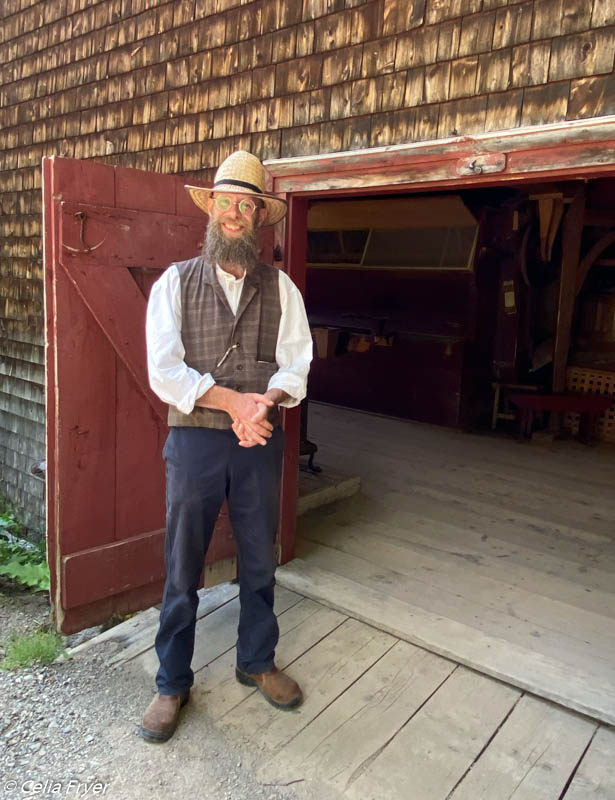
Our initial plan was to leave Prince Edward Island and head into Maine, traveling across the border to Bangor and then on to Rochester, New York. We realized that going up to Quebec City, Quebec and then to Rochester was about the same distance. Many folks recommended that we visit Quebec City, since we had never been to Quebec, it felt like a wonderful opportunity. Since we are “piddlinaround” we decided to stay at a Harvest Host in the town of Nackawic, New Brunswick, then Edmundston, NB, before reaching Quebec City. After we get back to the U. S., we are headed to Oregon, over 3,600 miles away, so we will have plenty of time for some long days.
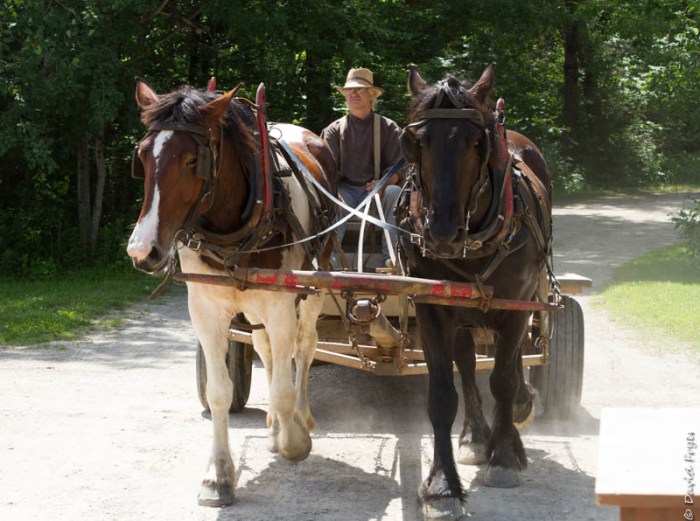
I had read about an interesting place between Nackawic and Fredericton called Kings Landing. This was a perfect place to check out since we weren’t likely to be back this way anytime soon.
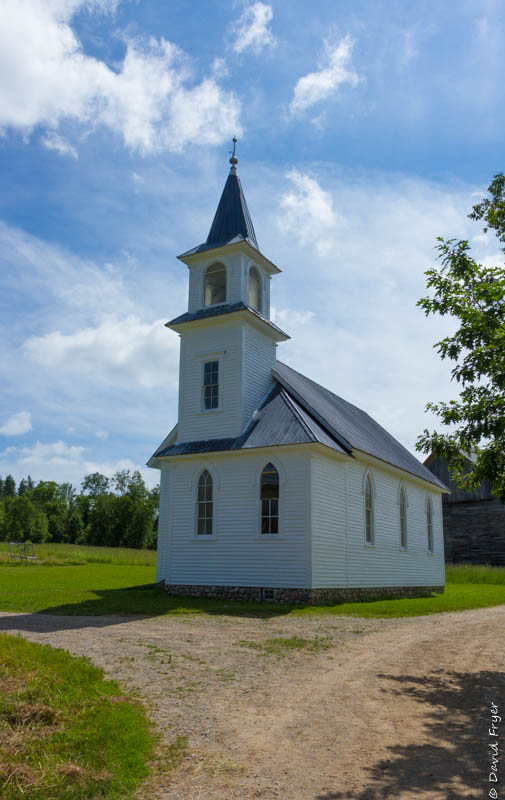
Kings Landing calls itself a “living history museum” that was created as a consequence of the construction of the Mactaquac Dam. Original buildings from 1820-1920 had to be removed because of the dam construction so they were transplanted to this location on the banks of the large St. John River.
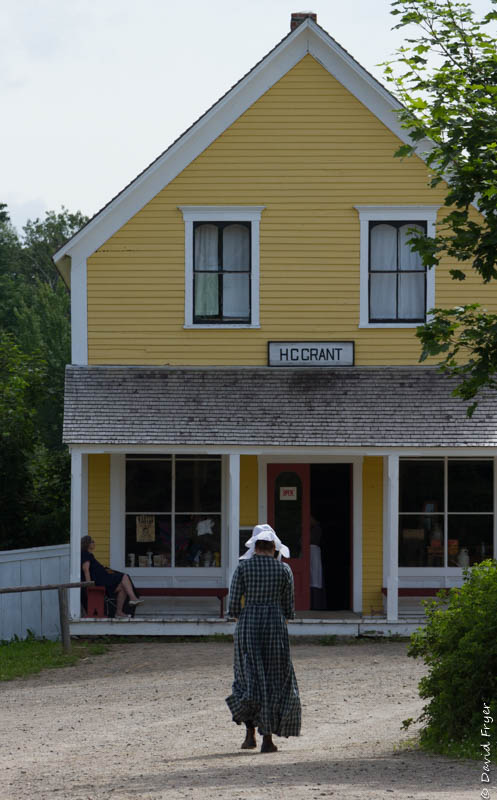
Currently Kings Landing has over 25 buildings on a large tract of land. The 300 acre site is large enough that they provide horse-drawn wagons to ferry visitors from place to place in this wonderful setting. They have a gristmill, a sawmill, churches, farmhouses, barns, etc. on the property and most of the locations have period-dressed interpreters. These buildings are spread out in this large location, giving the village a real community feel.
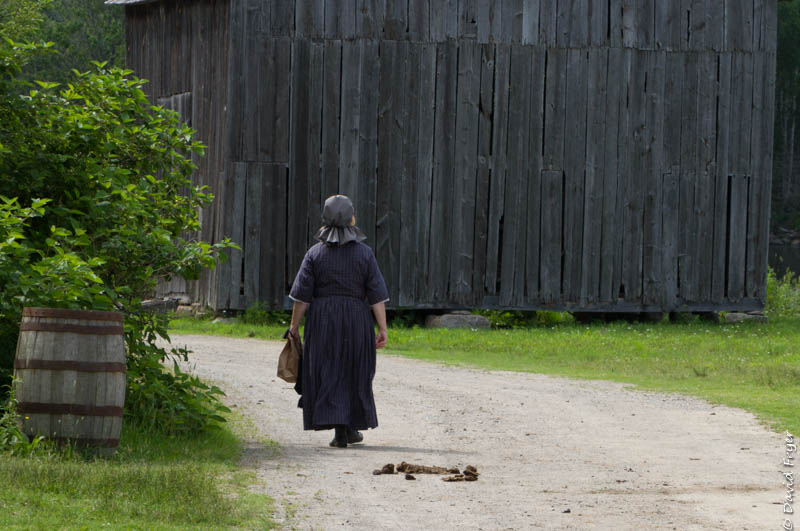
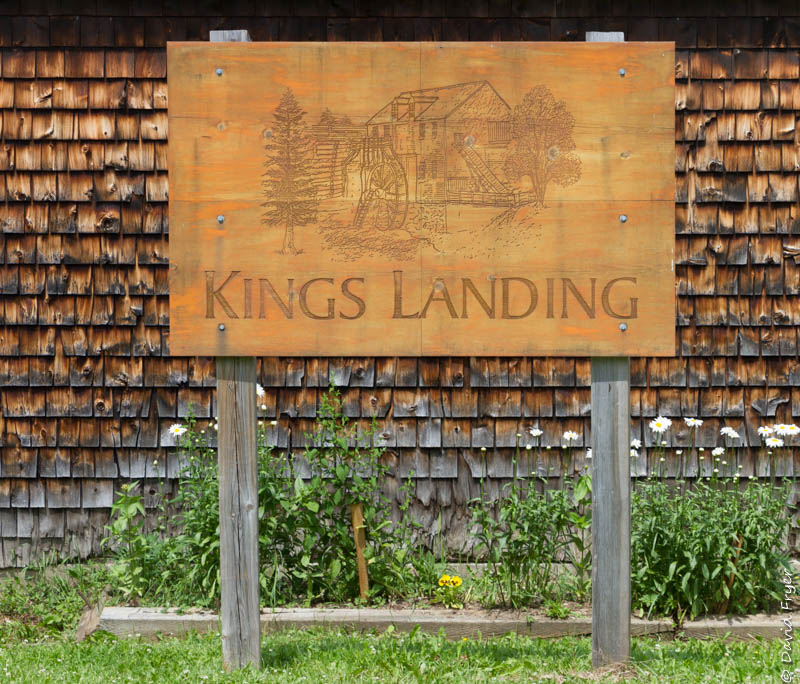
Officially opened in 1974, this museum is still a work in progress with new buildings added every few years. The buildings are restored to represent specific time periods in the province’s history. Many reflect rural New Brunswick when Loyalists from the United States settled in the area. The English, Scottish, and Irish immigrants are highlighted as well. We have mentioned in previous posts, that colonists loyal to the Crown fled from places like New York and Boston following the Revolutionary War. Many settled in Atlantic Canada.

We had planned to spend an entire morning there. As we passed the exit I asked Celia to check on the museum’s hours for the following morning. Whoa, they are not open on Mondays and Tuesdays. If we were going to visit, we needed to park quickly and visit it that day. We unhitched the Bighorn in Nackawic and headed back to Kings Landing. If we have learned anything, it is that you need to be flexible (Note: the parking lot at Kings Landing is big enough for any rig but there are so few exits on this part of the highway that our next exit was Nackawic anyway so we just parked there and returned).
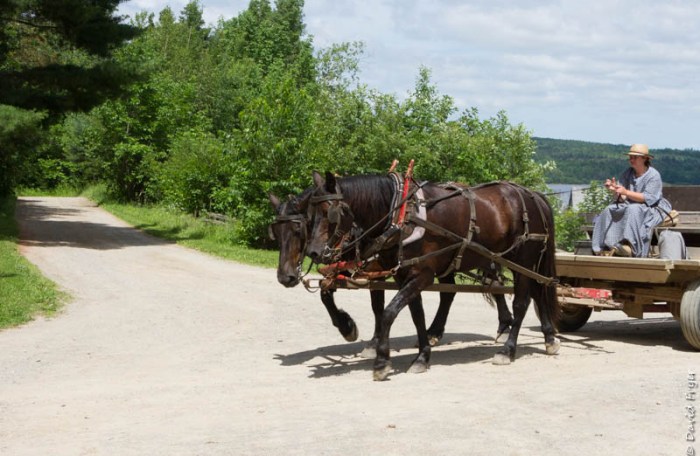
The ticket saleswoman at the Visitor Center recommended that we take the horse-drawn wagon to the farthest point of the museum’s property and work our way back to the entrance. There is not a recommended guide but rather a map that shows locations of the buildings.
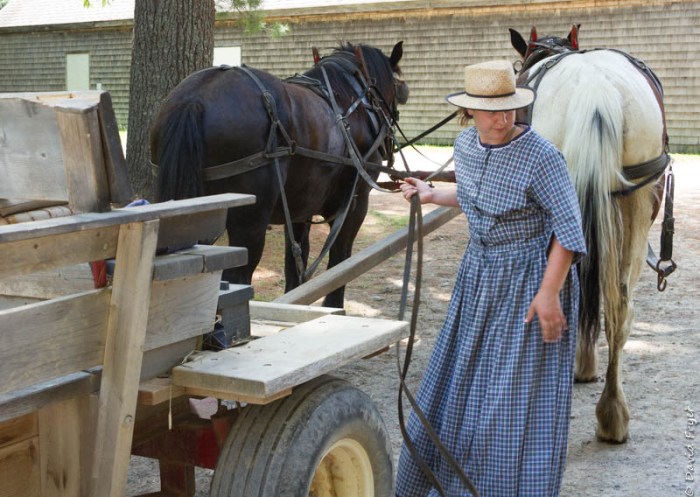
We hopped on a wagon but immediately they had a change of drivers. It turns out that each driver has their assigned horses so they were switched out as well.
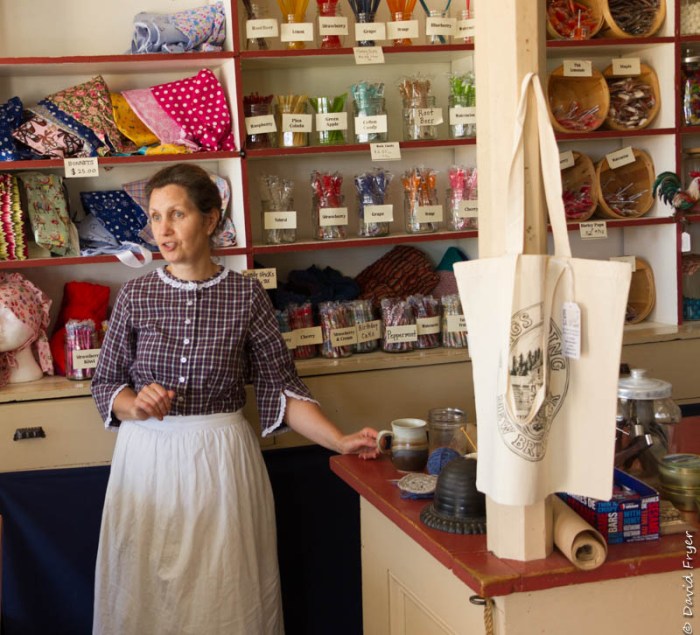
Our first stop was the community store.

The Ingraham House is located directly on the St. John river and it is a beautiful setting.
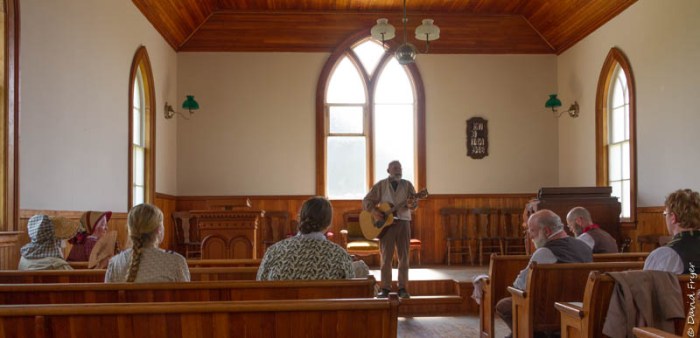
At the Riverside Presbyterian Church there was a gathering of the interpreters. They were all in period dress and were enjoying music as we peeked inside.
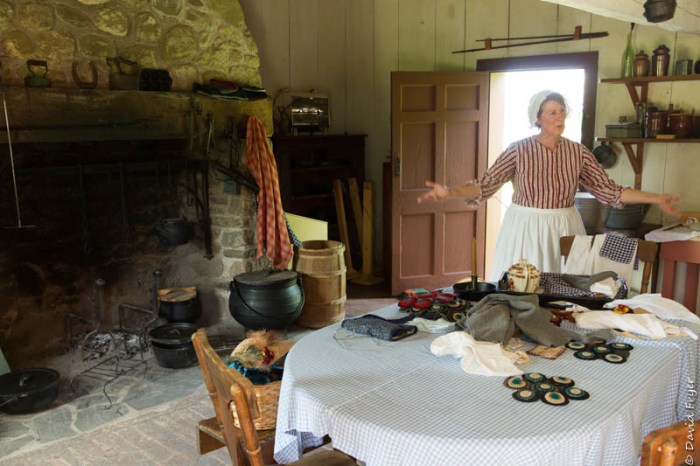
Next we visited the Morehouse Farm. The interpreter had many interesting items in her kitchen.
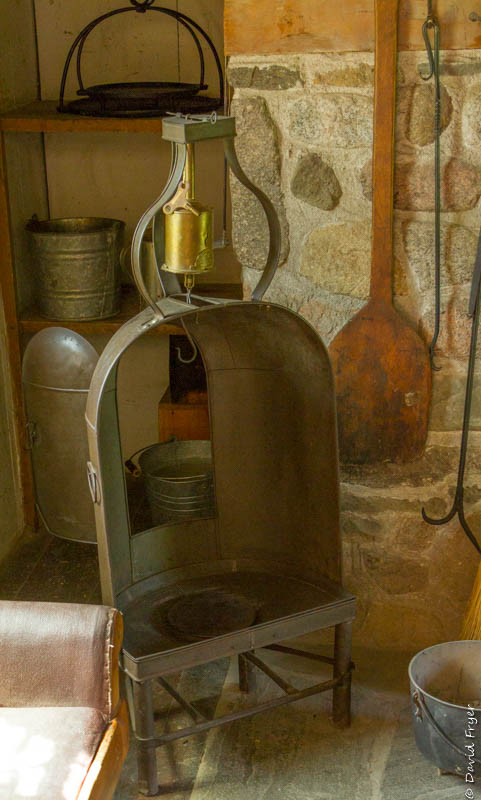
Have you ever seen a “reflector oven?” Sometimes called a Hastener (it hastens the cooking). It has a door on the back so you can check on the contents while the oven is facing the open fire.

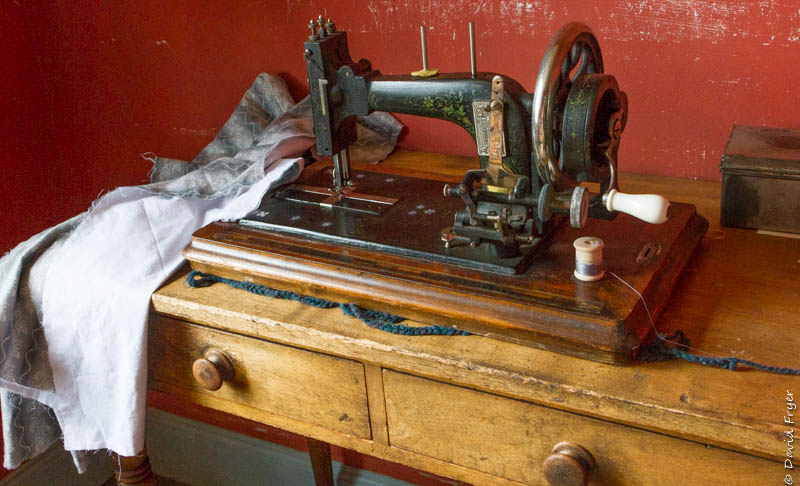
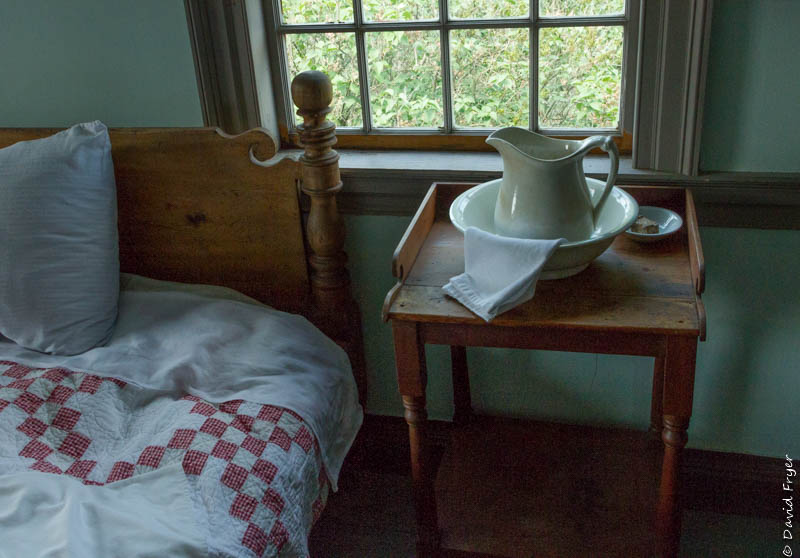

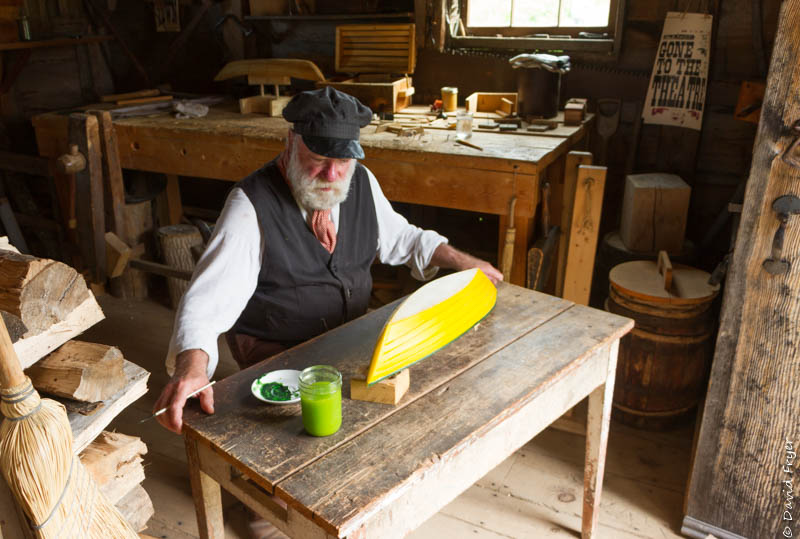

At the woodworkers shop.
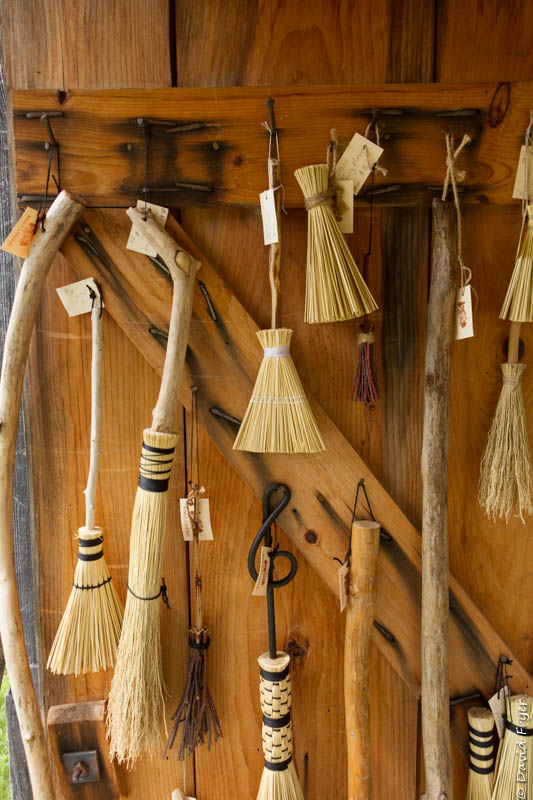
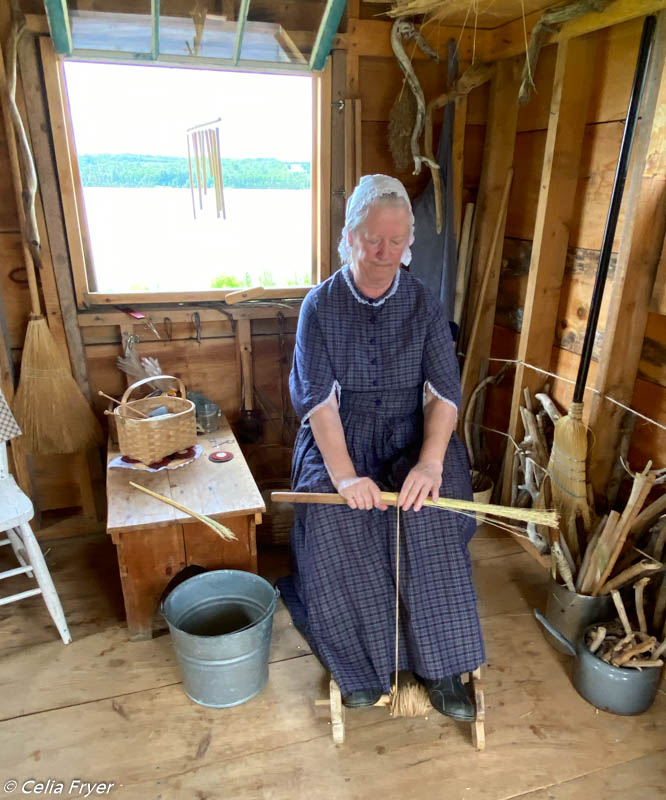
At the broom shed we learned about broom making. Notice the woman is operating the foot winder to create tension as she uses twine to tie the broom corn to the handle.
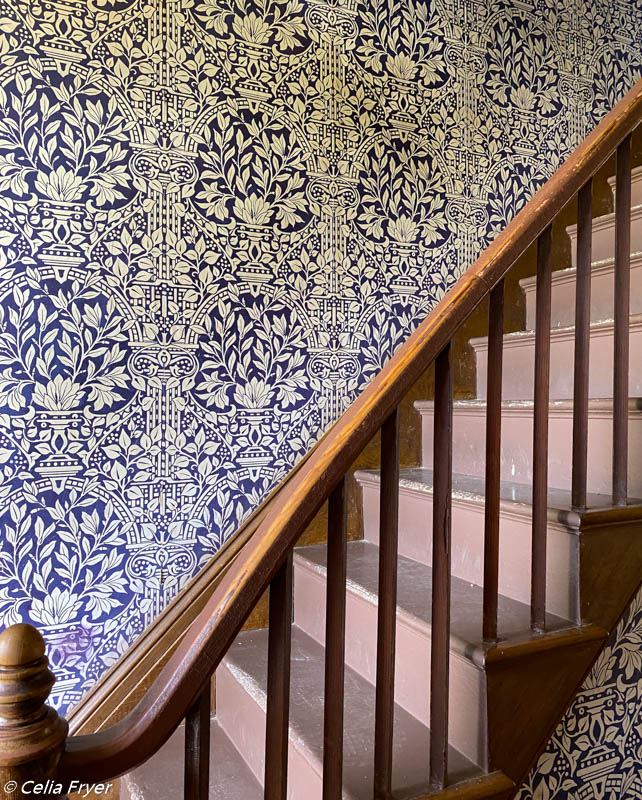
Our next visit was to a more “up-scale” home. You know you are in the home of a wealthy person when they have imported wallpaper from Europe!
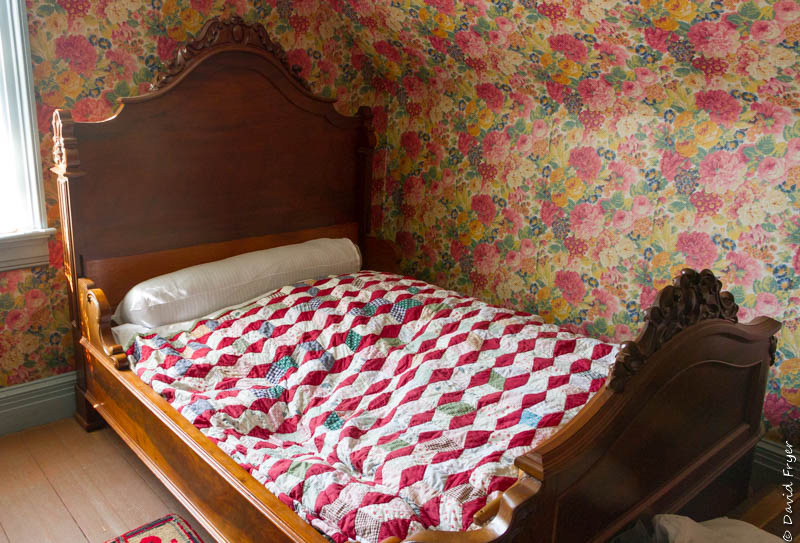
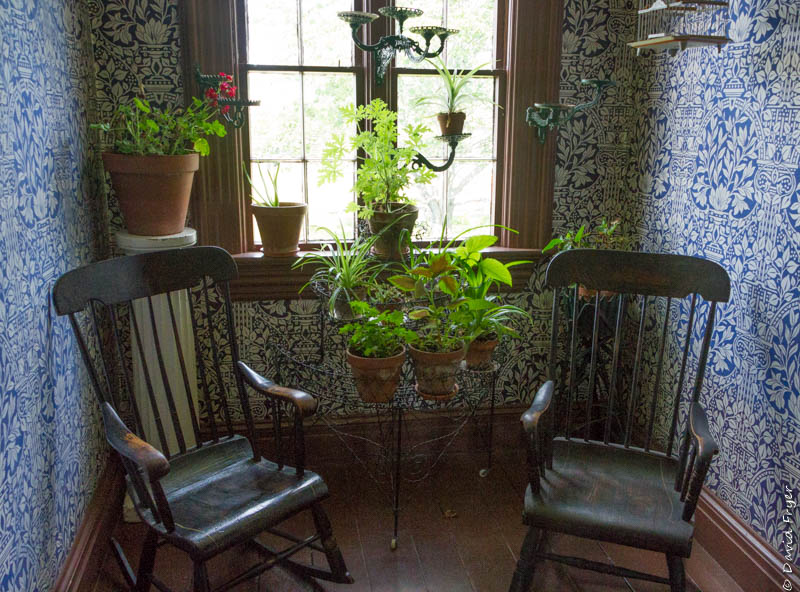
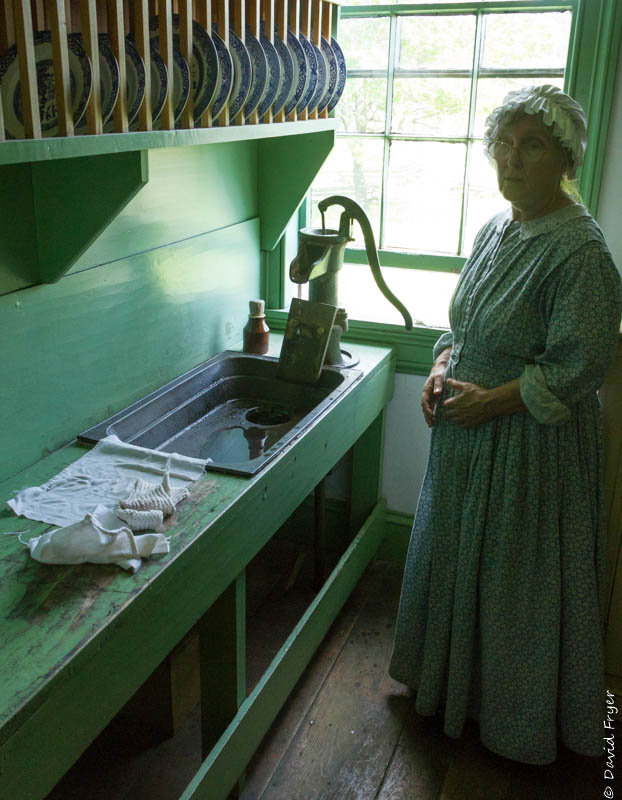
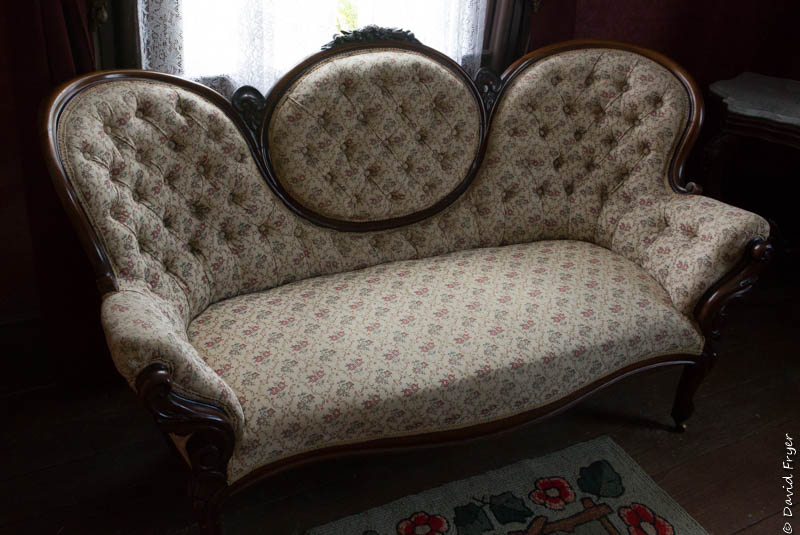
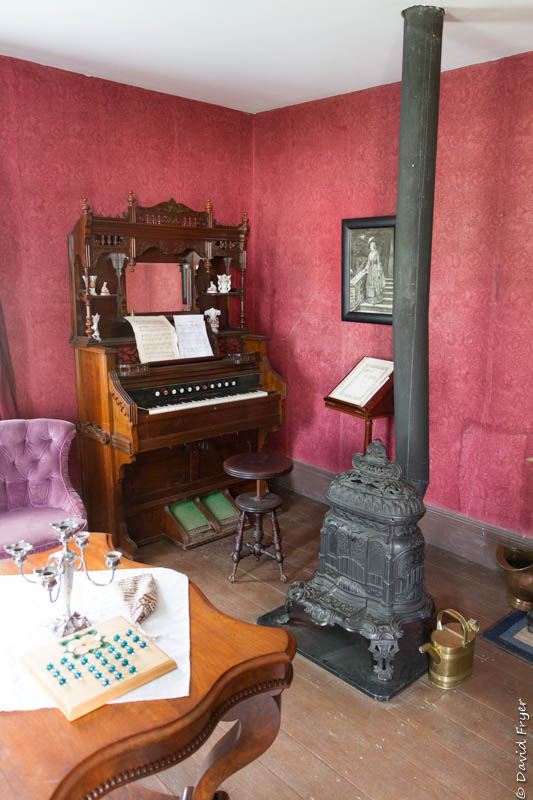
Running water and a dish drainer are other signs of the well-to-do.

St. Mark’s Anglican Church (c. 1848)

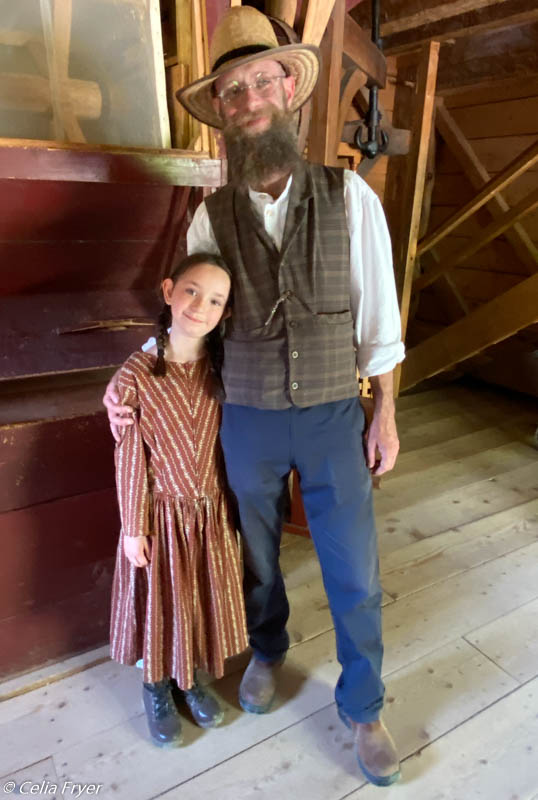
The gristmill was a fun site because of the daughter of the interpreter. She was happy to show us how the mill operates and to assist her dad. Like so many of the buildings, farms, mills, and barns, they are operational and currently produce products and services. This enthusiastic couple, and others like them, help make this a memorable experience.
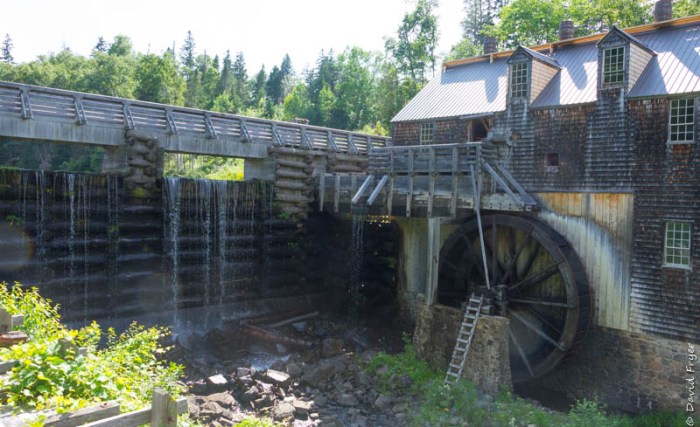
The sawmill is also impressive but unfortunately had just had a breakdown and it was not operational. The Jewett family mill produced boards that where shipped down the St. John River sometimes as far as England or New York.
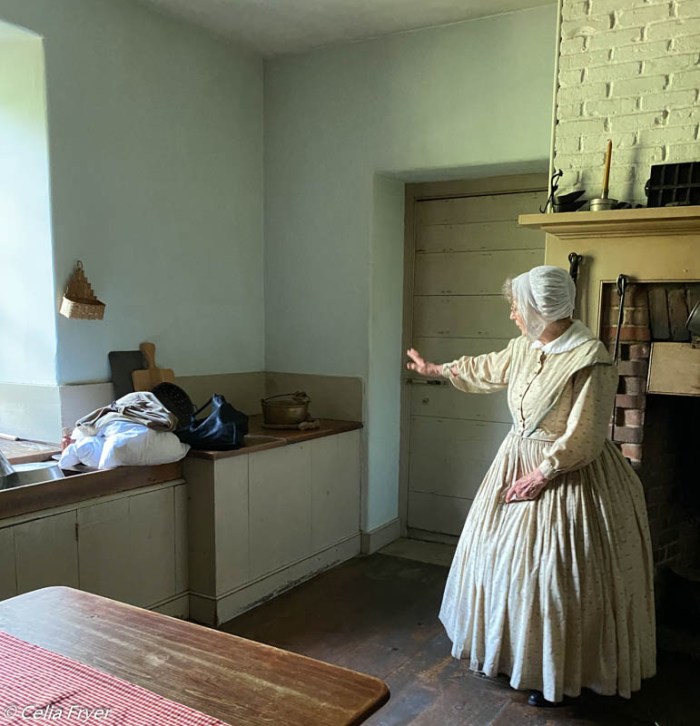
The Jones House (1828) was our last stop. It was time for the museum to close but the interpreters were more than happy to show us around. This stone house, constructed by a prominent justice of the peace for his bride, is built into the side of a hill. He was from another prominent Colonial American family.

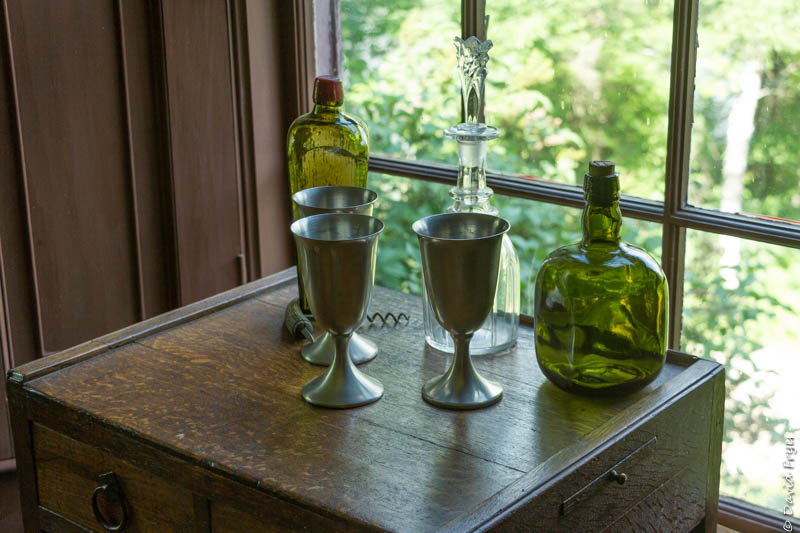
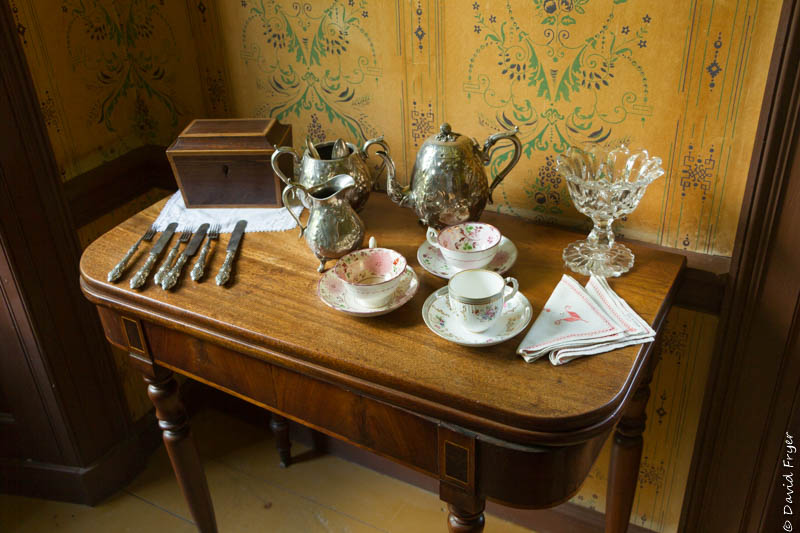

This two story house is much bigger than it looks. The “front” of the house is facing downhill and is a full two stories high. The house was also well appointed.
The house restorations and relocations at Kings Landing are extensive. For example, the Jones house was dismantled brick by brick, each piece labeled, and then relocated to Kings Landing. It took workers three years to accomplish this feat.
All in all this “living museum” is very impressive and well worth the visit. If we are ever this way again we will want to avoid Mondays and Tuesdays.

We had a full day and we were the last ones to leave. On the way back to the Bighorn we ventured through the town of Nackawic to see the biggest axe in the world. The axe rests in a park-like setting on the St. John River and indeed is large enough to make Paul Bunyan proud.
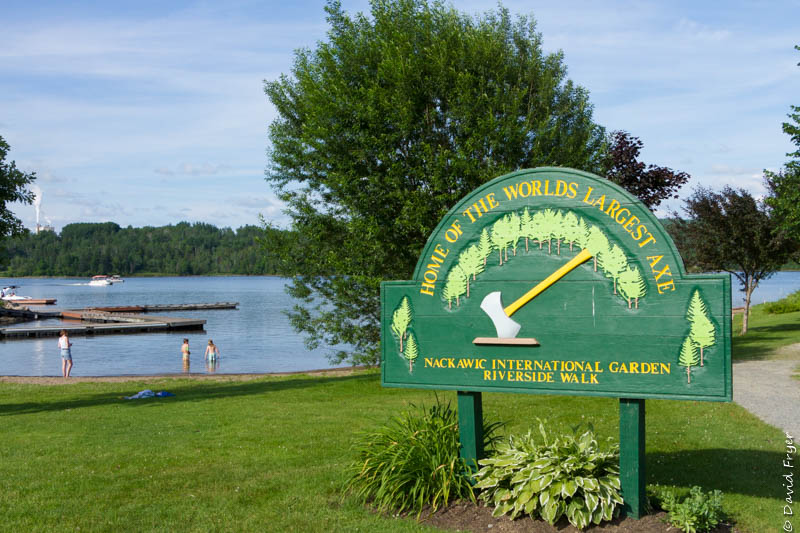
Our last night in New Brunswick was in Edmunston, which is a short drive to from Nackawic. The town is a historic one and, as we found out, a “French” city. We were surprised that most everyone was French speaking even though we were still in New Brunswick. We were told that only a few minutes away the nearby town was all English speaking. Sure enough, I went to purchase an item at a local store and realized that I could not communicate as to the item I was looking for. Some sign language later, I was able to find what I needed. Oui, Oui.
At our next stop, we will spend a few days in the fascinating Quebec City.
